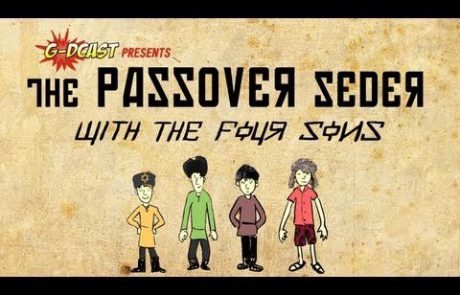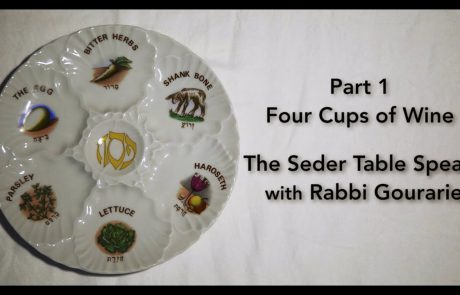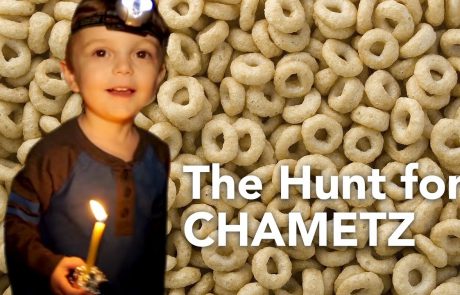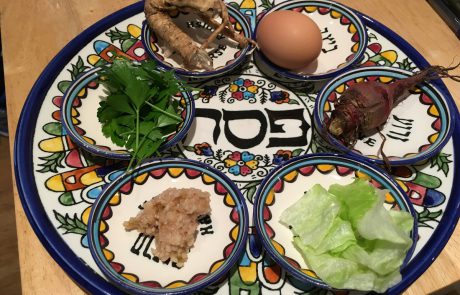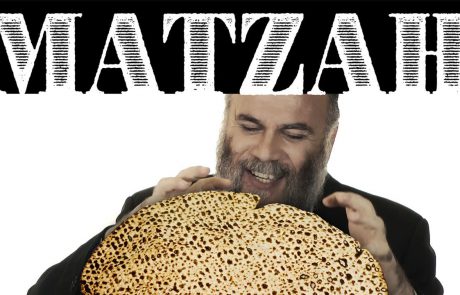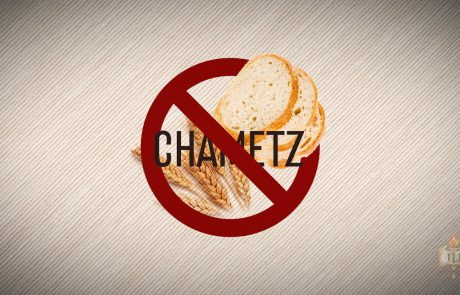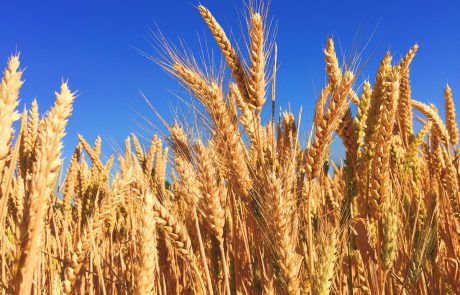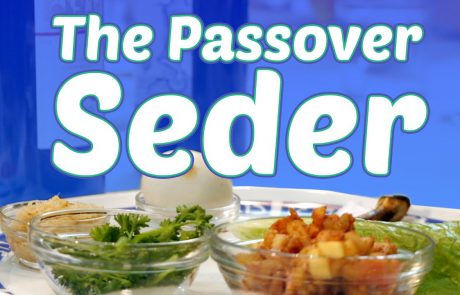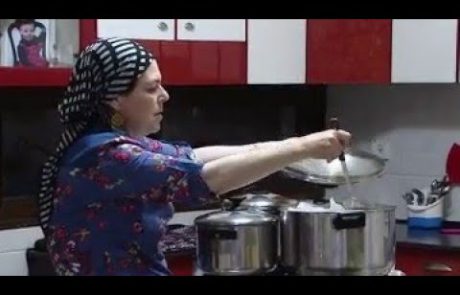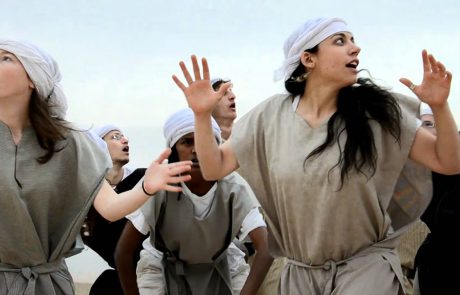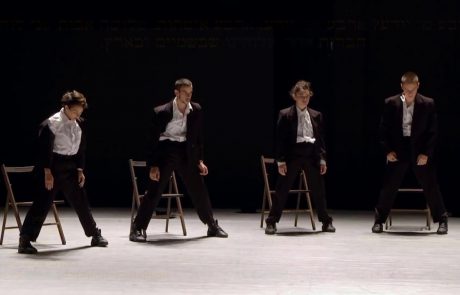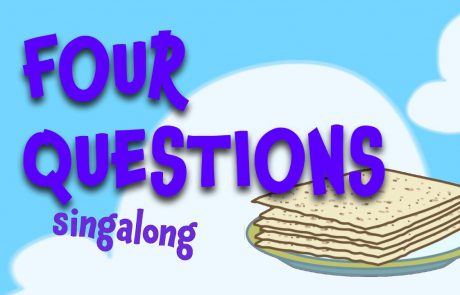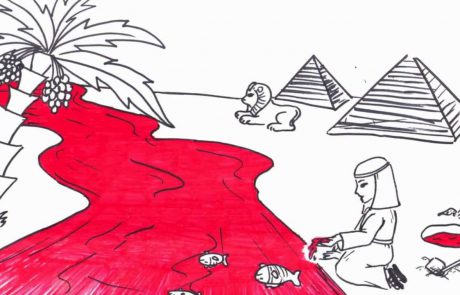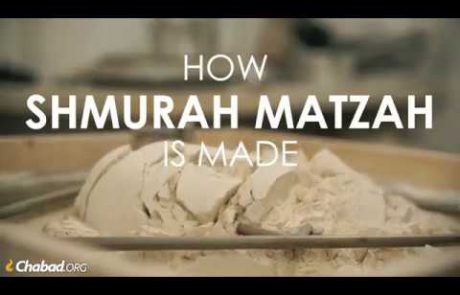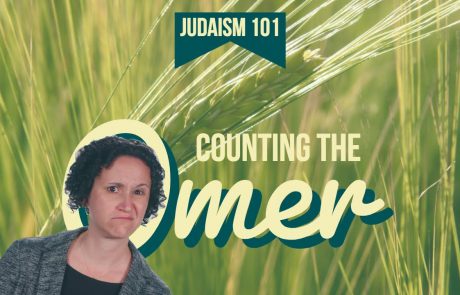
Passover
Дистанционное обучение
Нажмите, чтобы увидеть больше Дистанционное обучение информации ↓
The 15 Steps of the Passover Seder
In this short yet informative video (03:39), Rabbi Ephraim Z. Buchwald briefly explains each of the fifteen steps of the Passover seder in order. The steps are as follows: Kadesh
Biyur Chametz: Burning Chametz Before Passover
This video introducing the ritual burning of leftover leavened products on the eve of Passover shows a communal burning conducted by the ultra-Orthodox community in Spring Valley, Michigan, in conduction
The Four Sons
Who are the four sons, and how can we relate to them? This amusing animated video (04:07) brings the story of the Four Sons from the Passover Haggadah to life
The Transformational Power of the Four Cups of Wine
How do the four cups of wine represent the experience of freedom during the Passover Seder? In this video (04:22), Rabbi Michoel Gourarie explains how the four cups of wine
Bedikat Chametz: Searching for Chametz in Your Home
In this instructional video (03:38), a family demonstrate how to conduct the ritual search for crumbs of forbidden food in your home on the night before Passover, including the ritual
Unique Passover Traditions from Around the World
Passover is one of the most celebrated holidays in the Jewish world, yet each community adds their own unique twist, rooted in ancient traditions. This article presents a collection of some
The Passover Seder Plate Explained
This basic video (01:30) introduces the six symbolic food items traditionally laid on the seder plate during the Passover seder.
National Identity & The Stories We Tell
Why does Moses focus on the duty of the Jewish people to transmit the story of their exodus from Egypt to future generations when they are still enslaved? In this
Why Do Jews in the Diaspora Often Have Two Passover Seders?
This brief article from My Jewish Learning explains the halachic rationale for having two Passover seders outside of Israel and only one in Israel. It also outlines the accepted practices today in different
Matzah & More: Textual Sources & Spiritual Significance
What are the textual sources for our Passover traditions and rituals? In this video from Chabad.org (05:29), Dr. Michael Chighel examines the biblical sources for what foods we eat and
The Tale of a Sale: The Custom of Selling Chametz Before Passover
This clear and concise video (02:46) explains the history and halachic rationale behind the custom of selling one’s chametz to a non-Jew before Passover.
The Evolution of Passover Throughout History
What are the roots of the Passover festival, and how has its observance changed over time? This article from My Jewish Learning examines the various names given to this holiday
The Symbolism Behind Matzah: Freedom Can’t Wait
How can the ancient traditions of Passover be applied to our modern lives? In this inspiring video (04:22), Charlie Harary from Aish.com goes beyond the traditional explanation for why we eat
The Passover Seder: What to Expect
This introductory video (03:57) explains the basics of a traditional Passover seder, including the symbolic foods and ritual items and a brief introduction to each of the fifteen steps outlined
What is «Kosher for Passover»?
When it comes to what can and cannot be eaten on Passover, there are many confusing Hebrew terms and conflicting customs. This short video (01:21) briefly explains the concepts of
How Food is Prepared for Passover
Passover is not only about which symbolic foods are traditionally eaten and abstained from, but also about how the food is prepared. This i24News segment (02:39) takes viewers into the kitchen
Passover Themes from Exodus: Recognition of God, Renewal & Empathy
Going beyond freedom, this animated video (07:02) produced by Aleph Beta Academy reexamines the biblical text of Exodus to explore central themes of the holiday: recognition of God, renewal, and empathy. Aleph Beta
Innovative Passover Foods that Tell the Story of the Jewish People
Chef Ido Zarmi connects to the history of the Jewish people through food. In this video (03:28), he describes how he balances tradition and innovation in order to create delicious
Нажмите, чтобы увидеть меньше Дистанционное обучение информации ↑
Музыка
Нажмите, чтобы увидеть больше Музыка информации ↓
Medley of Traditional Hebrew Passover Songs
From Brazillian musician, Micha Gamerman, this upbeat animated music video is a festive medley of seven of the most popular, traditional Hebrew songs sung during the Passover seder. It begins with
The Fountainheads: Dayenu, Coming Home
A parody of Diddy’s «Coming Home» and Cee Lo Green’s «Forget You,» this high-energy music video features The Fountainheads singing about the Israelites yearning for freedom when they were slaves in Egypt. The Fountainheads is an
Six13: Uptown Passover
A parody of Mark Ronson’s «Uptown Funk,» this fun music video features Six13 singing about Passover, including a brief retelling of the story and some key elements of the seder. Six 13 is an all-male Jewish
Yaakov Shwekey: Vehi She’amda
A modern take on ancient words, the lyrics to this song, provided below in English, Hebrew and transliterated, come from the Passover Haggadah. It speaks about how God saves the
The Maccabeats: A Multi-Genre Twist of the Traditional «Dayenu»
In this amusing music video, the Maccabeats spice up their boring Passover seder with a multi-genre twist of the classic Passover song, «Dayenu.» They sing the traditional tune in many
Ached Mi Yodeah / Who Knows One? — Interpretive Dance & Lyrics
Echad Mi Yodea (Who Knows One?) is a traditional song sung at the end of the Passover seder. A cumulative list from one through thirteen, the goal of the song
Ma Nishtana / The Four Questions
Known as The Four Questions, «Ma Nishtanah» is one of the most well-known parts of the Passover seder, when the youngest person at the table traditionally asks what makes this
Chad Gadya
Traditionally sung in Aramaic and Hebrew, Chad Gadya is a playful cumulative song sung at the end of the Passover Seder. With a surprisingly upbeat melody, it tells the story
Ari Lesser: The Ten Plagues
In this animated music video, American Jewish rapper, singer, and spoken word artist, Ari Lesser tells the story of the ten plagues God sent to punish the Egyptians for refusing to let the
Что еще?
Нажмите, чтобы увидеть больше Что еще? информации ↓
Does an Orange Belong on a Seder Plate?
Professor Susannah Heschel added an orange to the center of her seder plate in the 1980s, as a symbol of solidarity with the often marginalized Jewish LGBTQ community. This short video (01:23)
Passover Sacrifice in Modern Jerusalem
How was the pilgrimage festival of Passover celebrated in Temple times? In this i24News segment (02:33), members of The Temple Institute gather together in the Old City of Jerusalem to
Mimouna: A Moroccan Celebration of the End of Passover
Originally celebrated by Jews in Morocco, Mimouna is a festival celebrating the end of Passover and the beginning of spring with delicious, symbolic foods, explained in this video (02:18). Today
How Shmurah Matzah is Made
«Shmurah matzah» — literally, «watched matzah» — refers to matzah baked from flour and water which has been carefully supervised over from the moment of harvesting and drawing to ensure
What are Sephardic Matzot and How Are They Made?
When most people think of matzah, they think of the hard, cracker-like matzot eaten by Asheknazi Jews and much of the Jewish world today. However, many Sephardic communities eat thick,
Matzah, Maror & Wine: What Do They Bring to the Table?
What’s the most important ritual food at the Passover seder? In this amusing video (03:28) from Chabad.org, animated talking matzah (representing humility), maror (representing bitterness) and wine (representing freedom) compete for
Обряды и церемонии
Нажмите, чтобы увидеть больше Обряды и церемонии информации ↓
Counting the Omer
The Counting of the Omer is the commandment to count the 49 days between Passover and Shavuot. This video introduces the agricultural roots, spiritual significance, and special customs of this
Нажмите, чтобы увидеть меньше Обряды и церемонии информации ↑



